Home
Blasta Books Launches TACOS!
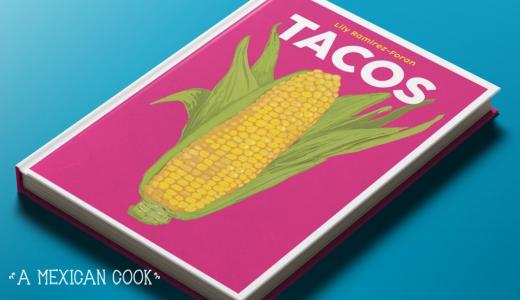
I've been keeping a project quite quiet for a few months and last Friday, I got the green light to shout it from the rooftops, hence me sharing it here now. The lovely Kristin Jensen, the editor behind many of Ireland's cookbooks, and the woman behind new publishing house, Nine Bean Rows Books, have launched a super cool project called Blasta Books. They are a series of small books, hard cover, fully illustrated by Dublin artist Nicky Hooper and designed by Jane Matthews. They are aimed at people who enjoy the quirky side of food. They are what street food is to restaurant: fun and accesible, plus they are beautifully edited and curated by Kristin. The Blasta Books are small books with big voices and I am honoured to be the first book in this cool series!!!
When Kristin first reached out in January, I couldn't believe my luck! I had always wanted to work with her and through one thing or another over the years we had never had the chance. I jumped to the idea and signed the deal almost immediately. My book TACOS will bring family style, totally achievable recipes from my Mexican kitchen to yours; showcasing some of my favourite recipes and introducing a few new ones. I am beyond excited about this and deep in recipe testing and finishing the manuscript at the moment, so apart from the few weeks before and after my dad's passing, where I couldn't get myself to cook at all, the process has been incredibly enjoyable and it has given me something to get out of bed for. My only regret is that my lovely Dad, always so quick to be super proud of my achievements, didn't get to see the beautiful cover.
The entire project is being crowdfunded and after only 3 days it is 94% funded! We just need a tiny push to get it over the line! The first two books, TACOS by me and HOT FAT by Russel Alford and Patrick Hanlon, the duo behind the popular social media account GastroGays, are ready for pre-order on the kickstarter page; while the next two books, one by Jess Murphy and Eion Cluskey and one by Kwanghi Chan are on the pipeline too and will benefit from any oversubscriptions we have on the project. I cannot wait to share this beautiful book with you all. The entire series will be super exciting and very collectable; the project will bring much needed diversity of voices to mainstream food publishing in Ireland and it can only make our bookselves better.
The books ship everywhere in the world at super reasonable prices and if you pre-order them through the kickstarter page, you'll get a copy signed before it hits the bookstores and at a special price! What's not to like?!! To support the project, go to the kickstarter page:
Pre-Order the book and this Project here!
Help us bring it over the line! - Stay safe!
Lily
Pan de Elote / Corn Cake
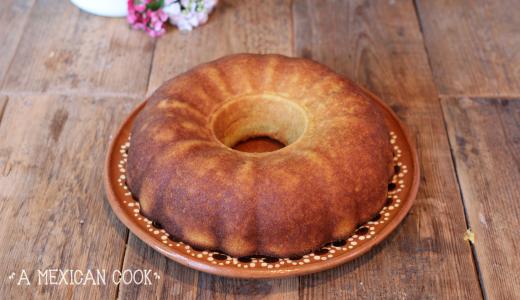
I hate waste, so when I found 3 ears of fresh corn in my fridge from a food delivery two weeks back, all I could think is Pan de Elote. My mother made this quite often when I was little and it was one of her favourite healthy treats for us. I have done nothing to the recipe other than translating it. It is perfect as it is, but I will say, this cake is best eaten while still warm, as it is crunchy in the outside and soft and moist in the inside. As it cools off, the crust softens and it somehow lessens the eating experience. If you have any leftovers, I recommend to reheat them in the microwave for 20 seconds to make them soft and warm, or to pan fry them with a little bit of butter to crisp up the outside again. The texture of this cake is not light, it's actually quite dense because of the corn, but that doesn't make it delicious.
If you noticed, the recipe is called Pan de Elote (literally translates as corn bread), but not to confuse it with the American version, which is something completely different to this, I have called it a cake. At home we use savoury corn to make it, however, we can only get sweet corn in Ireland, so I made it what that and it tasted really good!
In Mexico we make this bread a lot, loads of different recipes and methods, but this is how my family makes it and we just love it. Hope you do too.
Pineapple & De Arbol Chilli Tequila Liqueur
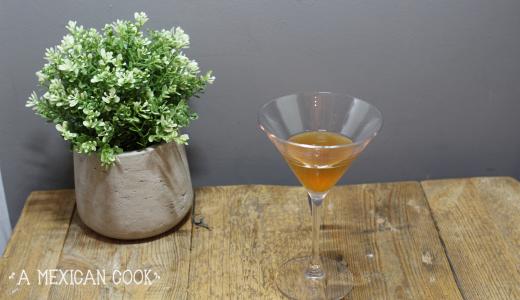
This year has been so bloody awful, that August & September saw me making tons of flavoured booze. It gives me something to look forward to as in two or three months time, the liqueurs will be ready and I can sit down on a Friday evening and have a nice home made cocktail and drawn my sorrows in it. This is my third liqueur so far and I'm delighted with the results.
There is one thing I would probably change in this recipe and that is that I decided to sliced the chillies instead of using them whole. While slicing them made the liqueur more evenly spicy, when it came to fishing the chillies out so the liqueur didn't get overly hot, I had to strain the whole thing through a cheese cloth, take out a gazillion of chilli slices and then put everything back into the jar, a little cumbersome. Next time, I'll probably use the whole chillies, just stem out and deseeded, that way, fishing them out will be easier.
If I was to give you a good piece of advise, is to invest in a few 1.5 litre Kilner glass Jars to keep making booze through the summer so you may have a happy winter! Berries and tropical fruits are plentiful during the summer months and it's a great way to use any excess at the time when they are at their best without making jam... although, once I strained the fruit from the liqueur, I'm planning to make some boozy jam too!
I had it on my instagram stories and loads of people have been asking for the recipe, so here it goes. Hope you enjoy it!
Spicy Beetroot Relish
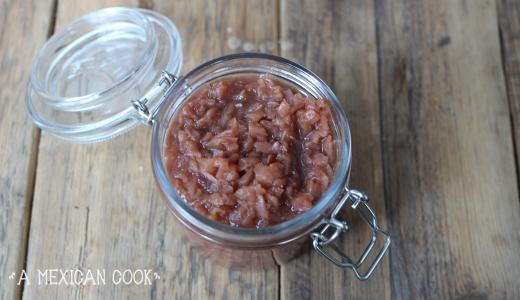
Most people have a story about lockdown: a friend learned basic Italian, another one learnt to play guitar, most of my social media friends made sour dough bread and got good at it; my coworker Liz and her partner did couple's yoga. Having so much time in our hands and no where to go and nothing to do, we turned to learning. The one commonality among us all, we all wanted to do something new.
For us, it was growing food. We have been trying to learn to grow our own food, we've tried it before but never seriously, always too many other things to do, not enough time, places to go, rushing around... lockdown gave us the motivation to tidy up two large raise beds we had gotten installed the year before that were a wonderful collection of weeds that kept the local bees happy. We went to task on it and by the end of March, we had the first few things planted: radishes, potatoes, onions... it took only a few weeks to get the first crop of radishes, we learned loads and 6 months into it, we have harvested potatoes, radishes, onions, squashes, French beans, beetroot, strawberries, chillies and tomatoes... now like most amateur growers, the concept of escalated planting never entered our minds. We planted everything at the same time and loads of it. As a result, I've been left with a gazillion of beetroot and this recipe is a result of having too much beetroot and loads of imagination, I hope you like it! Don't worry to much about the type of beetroot you're using, whatever you planted or can find, it's ok.
Raspberry & Mexican Vanilla Tequila Liqueur
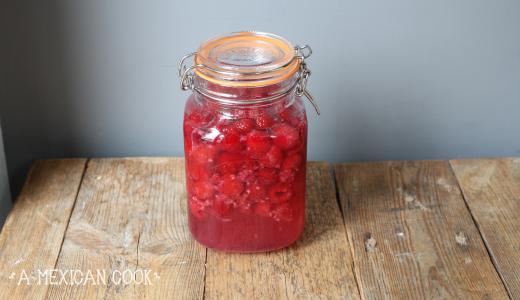
As August comes to a close and autumn descended on us all like a ton of bricks (I don't know you, but I had the heat on since Friday!) I came to the realisation that 2020 will be a write off in so many ways: environmental disasters of apocalyptic proportions, financial stress on the business side of things, health worries, mental strain, the societal descent into anarchy, the polarisation of masses, the end of democracies as we knew them, the loss of so many precious lives... it is all too much some days... but rather than getting bogged down on the horrid details, I've decided to officially declared 2020 void and start preparing for the celebrations I'll have kissing this bastard of a year good bye from the comfort of my own home with the other half and the nephew who lives with us.
I've recently become obsessed by infusing things: sugars, salts, ice-cream custards and of course, spirits, particularly Tequila & Mezcal. In April, our friends, Catherine & Fionnula gifted us a bag of freshly foraged elderflowers and I came running back home and made a litre of Elderflower Tequila Liqueur... It's just about ready now and I'm telling you, it's da bomb! - This got me thinking what else I could be doing with my blanco tequilas, which I often get gifts of and I don't drink, as I much prefer anejos or reposados, which are aged properly and have smoother taste. A batch of fresh raspberries was gotten and off I went into a world of joy and anticipation making this gorgeous Raspberry and Mexican Vanilla Tequila Liqueur. It takes no time and very little preparation to make it, but it must age in a dark, cool place for at least two months, but it's much better if you age it for three or four.
It's a perfect homemade gift for a special friend, it keeps for zonkers, there is no waste as when the liqueur is ready, you strain the fruit and the vanilla pod can be both used in other stuff, like a boozy raspberry jam, or a raspberry coulli, you can freeze the boozy berries and make an adult sorbet for a fancy occasion and the vanilla pod is perfectly usable as it is preserved in alcohol.
Since the liqueur is already sweeten, it's great to make instant cocktails: a good splash of this on a glass, top with some good quality tonic water, like Poacher's, which is not only delicious but also Irish, and a few ice cubes and off you go! It is also great to add over ice-cream, or to flavour home-made ice-cream, or to make sorbets... the downside, you must be patient and allow it to age and matured well before you drink it, but hey, it's something to look forward to in this awful, awful times!
Finally, the corona virus is real, please don't be using this recipe to host a house party, it's bollox of the highest order and plain irresponsible. Also, don't be an ass and wear a mask, you might be ok if you catch it, but others aren't as lucky as you. Some of us have underlined conditions and won't do well if we catch it. Stay home, take personal responsibility and save the world while watching Netflix and sipping on homemade cocktail, it is the simplest of things to do.














